The Ultimate Guide to IAM Tools: Features, Benefits & Best Solutions
The Ultimate Guide to IAM Tools: Features, Benefits & Best Solutions
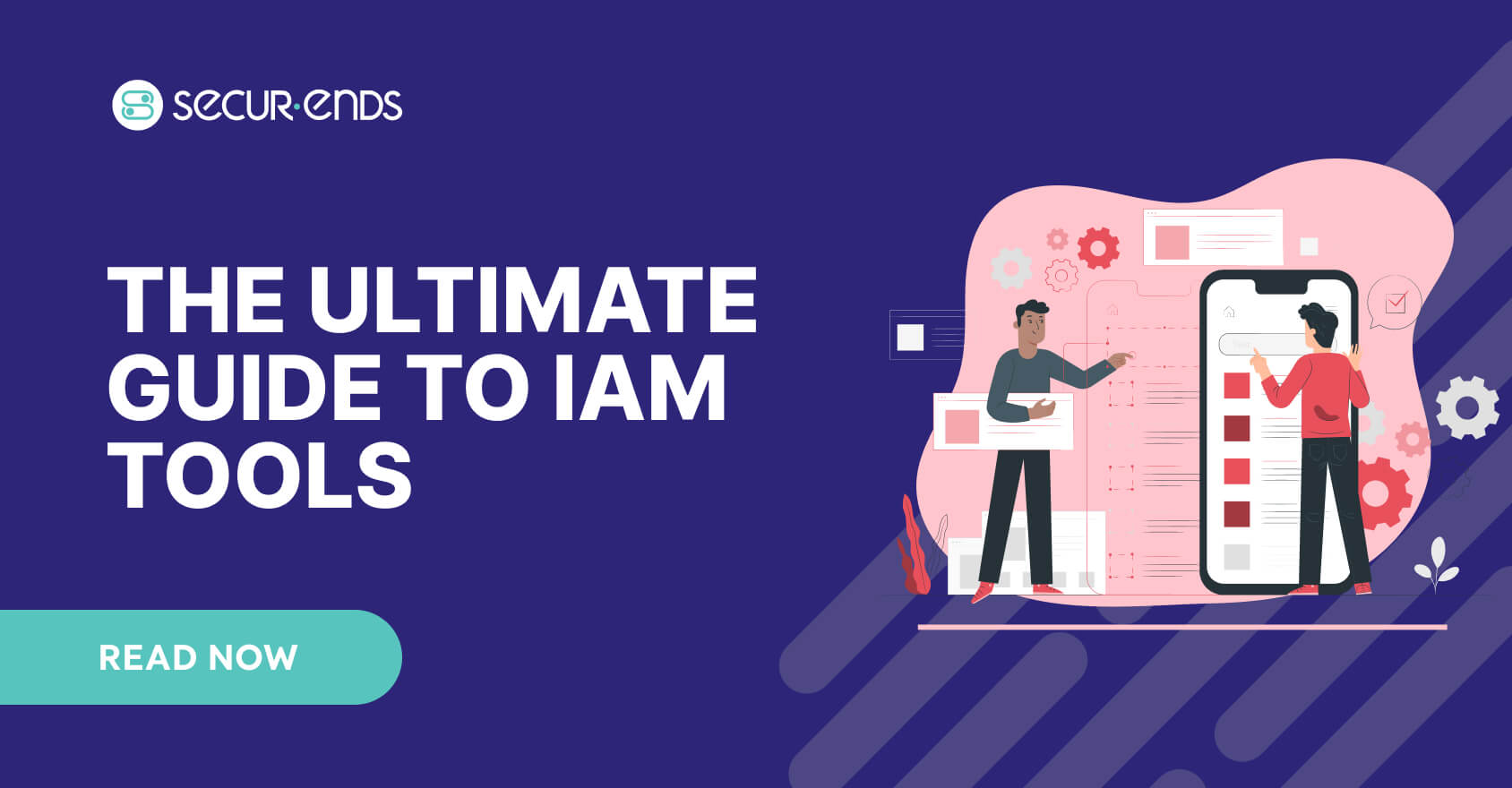
In today’s highly digitized business environment, managing user identities and access permissions is fundamental to maintaining cybersecurity and operational efficiency. Identity and Access Management tools provide organizations with a structured approach to verifying identities, enforcing security policies, and ensuring that only authorized users can access critical systems and data.
IAM tools function as a comprehensive security framework that integrates authentication, authorization, and user lifecycle management. By implementing IAM solutions, businesses can effectively mitigate security risks, prevent unauthorized access, and maintain compliance with industry regulations. With cyber threats becoming increasingly sophisticated, the need for a robust identity security platform has never been more critical.
This article explores the role of IAM tools in modern cybersecurity, their importance in managing user identities, and how they contribute to a secure and efficient IT environment.
Read Also: Best Practices for Identity and Access Management
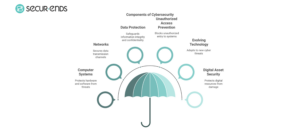
2. Core Functionalities of IAM Tools
Identity and Access Management (IAM) tools play a pivotal role in securing digital environments by providing a structured approach to authentication, authorization, and access control. These tools ensure that only authorized users can access critical business resources while maintaining operational efficiency and regulatory compliance. Below are the core functionalities of IAM security tools that define their effectiveness in modern enterprises.
Authentication & Authorization: Validating User Access
At the foundation of IAM tools is authentication, the process of verifying a user’s identity before granting access to systems and applications. This can involve traditional password-based authentication or advanced security methods such as biometrics, smart cards, and Multi-Factor Authentication (MFA).
Once authenticated, the system enforces authorization policies, determining what level of access a user has within the network. Using role-based access control (RBAC) and attribute-based access control (ABAC), IAM solutions ensure that users can only access the resources necessary for their roles, minimizing security risks and preventing unauthorized data exposure.
Single Sign-On (SSO): Seamless Access Across Applications
Managing multiple passwords across various platforms can be cumbersome and security-intensive. IAM solutions incorporate Single Sign-On (SSO) to streamline user authentication by allowing individuals to access multiple applications with a single set of credentials. This enhances security by reducing the risk of password-related breaches while improving user experience and operational efficiency. IT administrators can also centralize access control, ensuring that permissions are updated or revoked as needed.
Multi-Factor Authentication (MFA): Strengthening Security Measures
Traditional passwords alone are no longer sufficient to protect against cyber threats. Multi-Factor Authentication (MFA) adds an extra layer of security by requiring users to verify their identity using multiple authentication factors. These can include:
- Something You Know – Passwords or PINs
- Something You Have – One-time passcodes, hardware tokens, or mobile authentication apps
- Something You Are – Biometric verification such as fingerprints or facial recognition
By implementing MFA, organizations significantly reduce the risk of unauthorized access, even if passwords are compromised.
Read Also: What is Federated Identity Management (FIM)?
Role-Based & Attribute-Based Access Control (RBAC & ABAC): Enforcing Policy-Driven Access
Effective IAM solutions incorporate Role-Based Access Control (RBAC) and Attribute-Based Access Control (ABAC) to enforce access policies across an organization.
- RBAC assigns permissions based on predefined roles, ensuring that employees have access to only the data and systems required for their job functions. This simplifies access management and minimizes the risk of privilege abuse.
- ABAC goes a step further by granting access based on a combination of user attributes, environmental conditions, and security policies. This dynamic approach enhances flexibility and ensures compliance with regulatory requirements.
By integrating these core functionalities, IAM tools not only enhance cybersecurity but also improve the efficiency of IT operations by automating identity governance and access control. In the following section, we will explore how these functionalities translate into real-world benefits for businesses.

3. Benefits of Using IAM Tools for Businesses
As organizations navigate complex digital landscapes, Identity and Access Management tools have become essential for enhancing security, ensuring compliance, and streamlining operations. By implementing the best IAM solutions, businesses can safeguard sensitive information while improving efficiency and scalability.
Enhanced Security: Preventing Breaches & Insider Threats
One of the primary advantages of IAM security solutions is their ability to fortify cybersecurity by managing and restricting access to critical systems. These tools:
- Enforce Multi-Factor Authentication (MFA) to prevent unauthorized access.
- Apply role-based and attribute-based access control (RBAC & ABAC) to ensure users only have permissions relevant to their roles.
- Detects and mitigate insider threats by monitoring and logging user activity.
By automating access controls and continuously monitoring user behavior, IAM tools significantly reduce the risk of data breaches and unauthorized activities within an organization.
Regulatory Compliance: Meeting GDPR, HIPAA, SOC 2, and More
With stringent data privacy laws in place, organizations must meet regulatory requirements to avoid penalties and reputational damage. IAM solutions help businesses stay compliant by:
- Enforcing access policies that align with regulations such as GDPR, HIPAA, SOC 2, and ISO 27001.
- Generating detailed access logs to support audit trails and compliance reporting.
- Minimizing human errors in access provisioning, reducing the likelihood of security lapses.
By automating compliance-related processes, IAM tools ensure that businesses adhere to legal and industry standards without adding administrative burden.
Productivity Boost: Reducing IT Workload & Enabling Self-Service
Beyond security, IAM solutions enhance operational efficiency by automate user access review and reducing IT workload. Key productivity benefits include:
- Self-service password management, reducing helpdesk dependency.
- Single Sign-On (SSO), allowing employees to seamlessly access multiple applications without repeated logins.
- Automated user provisioning and de-provisioning, streamlining onboarding and offboarding processes.
With these features, IAM tools not only improve user experience but also free up IT resources to focus on strategic initiatives rather than routine access management tasks.
Scalability: IAM Tools for Startups, SMBs, and Enterprises
IAM solutions are designed to scale with business growth, making them suitable for startups, small and medium-sized businesses (SMBs), and large enterprises. Key scalability features include:
- Cloud-based IAM solutions, enabling flexible deployment across distributed teams.
- Adaptive access controls, allowing businesses to customize permissions based on organizational needs.
- Integration with existing IT infrastructure, ensuring seamless expansion as businesses grow.
Whether a company is in its early stages or a global enterprise, IAM tools provide the necessary flexibility to manage access securely and efficiently.
By leveraging IAM tools, businesses can strike the perfect balance between security, compliance, and productivity while ensuring long-term scalability. In the next section, we will explore the leading IAM solutions available today and how they compare.
Managing user access securely is essential for any organization. IAM platforms help businesses control authentication and authorization, ensuring only the right people can access critical systems. Various IAM providers offer different solutions based on business needs. Here are the main types of identity and access management software vendors and their use cases.
4. Types of IAM Tools & Their Use Cases
1. Cloud-Based IAM Platforms
These tools help businesses manage identities in cloud environments, ensuring secure access to applications and data.
Examples:
- AWS IAM – Manages user permissions for Amazon Web Services.
- Azure AD – Provides Single Sign-On (SSO), multi-factor authentication (MFA), and identity protection.
- Google Cloud IAM – Controls access to Google Cloud resources securely.
Use Cases:
- Managing user access to cloud applications
- Automating user provisioning and deprovisioning
- Enforcing security policies for SaaS tools
2. Enterprise IAM Solutions
Larger businesses need advanced IAM platforms to manage employees’ and customers’ access across multiple applications.
Examples:
- Okta – Simplifies user authentication and access management.
- IBM Security Verify – Uses AI to detect and prevent security threats.
- Ping Identity – Ensures secure login for employees and customers.
Use Cases:
- Enhancing security for enterprise apps
- Implementing strong authentication measures
- Ensuring regulatory compliance
3. Privileged Access Management (PAM)
PAM solutions protect high-level accounts, like IT administrators, from security threats.
Examples:
- CyberArk – Secures and monitors privileged accounts.
- BeyondTrust – Prevents unauthorized access to sensitive data.
- Thycotic – Manages credentials and controls admin access.
Use Cases:
- Protecting critical IT systems
- Preventing insider threats
- Controlling administrator access
4. Open-Source IAM Platforms
These free and flexible IAM tools are ideal for businesses looking for customizable solutions.
Examples:
- Keycloak – Provides SSO and social login options.
- Auth0 – Offers authentication APIs for developers.
- OpenLDAP – Manages user identities through directory services.
Use Cases:
- Affordable IAM for small and mid-sized businesses
- Custom authentication solutions
- Reducing IAM costs with open-source tools
Choosing the right IAM platform depends on your business size and security needs. Whether you need cloud-based IAM, enterprise IAM, PAM solutions, or open-source IAM, securing user access is crucial for protecting digital assets
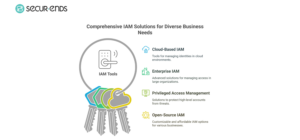
5. Cloud-Based IAM Tools: Features & Benefits
As businesses move to the cloud, managing user access securely is more important than ever. Cloud IAM solutions help organizations control authentication, authorization, and user permissions across cloud environments. Below, we explore key IAM in cloud computing tools, their benefits, and best practices for securing identities.
Overview of Cloud IAM Tools
1. AWS IAM
Amazon Web Services’ Identity and Access Management (AWS IAM) lets businesses control access to AWS services and resources securely.
Key Features:
- Role-based access control (RBAC)
- Multi-factor authentication (MFA)
- Fine-grained permission policies
2. Azure AD
Microsoft’s Azure Active Directory (Azure AD) is a cloud-based identity solution that integrates with Microsoft 365 and third-party applications.
Key Features:
- Single Sign-On (SSO)
- Conditional access policies
- Identity protection with AI-based threat detection
3. Google Cloud IAM
Google Cloud IAM allows organizations to define access controls for cloud resources at a granular level.
Key Features:
- Identity federation for external users
- Centralized access control across Google Cloud services
- Audit logs for security monitoring
Benefits of Cloud IAM Solutions Over On-Premise IAM
- Scalability – Easily manage access for growing user bases without infrastructure limitations.
- Cost-Effectiveness – No need for expensive hardware or maintenance like traditional IAM systems.
- Flexibility – Supports remote work and multi-cloud environments.
- Automated Security – Features like MFA, adaptive authentication, and real-time threat detection enhance security.
- Simplified User Access – Enables seamless login across cloud apps with SSO.
Best Practices for Securing Cloud Identities
- Implement Least Privilege Access – Grant only the necessary permissions to users.
- Use Multi-Factor Authentication (MFA) – Add an extra layer of security beyond passwords.
- Monitor and Audit Access Logs – Regularly review user activities to detect suspicious behavior.
- Enforce Strong Password Policies – Require complex passwords and periodic updates.
- Integrate IAM with Zero Trust Security – Continuously verify users and devices before granting access.
Identity and access management in cloud computing is essential for securing modern businesses. By leveraging cloud IAM solutions like AWS IAM, Azure AD, and Google Cloud IAM, organizations can improve security, streamline access, and reduce IT costs while maintaining strong identity protection measures.
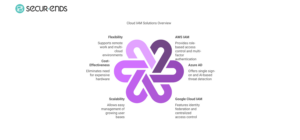
6. Enterprise IAM Tools: How They Support Large Organizations
Leading Enterprise IAM Solutions
Several IAM leaders offer comprehensive platforms designed to meet the complex needs of large enterprises:
- Okta – A cloud-based identity and access management platform known for its seamless integration capabilities, adaptive authentication, and zero-trust security approach.
- IBM Security Verify – Provides AI-driven identity governance, risk-based authentication, and centralized access management.
- Ping Identity – Specializes in single sign-on (SSO), multi-factor authentication (MFA), and API security, ensuring scalable identity management.
IAM Integration with Business Systems
A well-implemented enterprise IAM solution integrates with essential business platforms such as:
- HR Systems – Automates user provisioning and de-provisioning, reducing manual errors and security risks.
- ERP & CRM Platforms – Ensures role-based access control (RBAC), securing sensitive business data.
- IT Service Management (ITSM) Tools – Enhances incident response and compliance tracking by integrating IAM with IT workflows.
Custom IAM Solutions for Industry-Specific Needs
Different industries require tailored identity and access management platforms to address unique security challenges:
- Healthcare – IAM ensures HIPAA compliance, protects patient records, and enables secure clinician access.
- Finance – Provides strong authentication and fraud prevention for banking and financial services.
- Government – Supports secure access to classified data and meets regulatory requirements like FedRAMP.
By implementing the right enterprise IAM solution, organizations can strengthen security, improve compliance, and streamline identity management across all digital assets.
7. Privileged Access Management (PAM) Tools: Securing High-Risk Accounts
In modern enterprises, privileged identity management tools are essential for protecting sensitive accounts with elevated access. A robust IAM security tool ensures that administrators, IT teams, and third-party vendors can securely access critical systems without exposing organizations to cyber threats.
Why Privileged Access Management (PAM) Matters?
High-privilege accounts, such as system administrators and database managers, are prime targets for cyberattacks. Privileged identity management tools mitigate security risks by:
- Enforcing least-privilege access to reduce attack surfaces.
- Implementing real-time monitoring and session recording.
- Automating credential rotation to prevent unauthorized use.
- Enabling IAM automation for seamless user provisioning and de-provisioning.
Read Also: Navigating Premium User Access Management: A Complete Overview
Best PAM Tools for Enterprises
Several IAM security tools lead the market in privileged identity management:
- CyberArk – A trusted leader in privileged identity management tools, offering session monitoring, password vaulting, and AI-powered threat detection.
- BeyondTrust – Provides robust IAM automation, privileged session management, and endpoint security.
- Thycotic (now part of Delinea) – Specializes in cloud-ready IAM security tools, simplifying privilege access controls for hybrid environments.
How PAM Protects Admin Credentials, Databases & Cloud Servers
An effective IAM security tool secures critical enterprise assets by:
- Protecting admin credentials – Encrypting and vaulting credentials to prevent unauthorized access.
- Securing databases – Implementing just-in-time access to limit exposure to sensitive information.
- Defending cloud servers – Applying IAM automation for real-time access governance in multi-cloud environments.
By deploying the right privileged identity management tools, enterprises can enhance security, reduce insider threats, and ensure compliance with industry regulations.
8. Open-Source IAM Tools: Flexible & Cost-Effective Solutions
For organizations seeking scalable and budget-friendly identity management, IAM open-source solutions provide a viable alternative to proprietary platforms. These open-source IAM solutions offer flexibility, transparency, and customization, making them ideal for enterprises and developers alike.
Benefits of Open-Source IAM Tools for Developers & Enterprises
Choosing IAM open-source tools comes with several advantages:
- Cost-Effective – Eliminates licensing fees while offering enterprise-grade security.
- Customizability – Allows businesses to tailor open-source IAM solutions to their specific needs.
- Community Support – Benefits from continuous improvements and contributions from global developers.
- Integration Flexibility – Easily connects with various applications, APIs, and cloud environments.
Comparison of Keycloak vs. OpenLDAP vs. Auth0
When selecting an IAM tools list, organizations often compare these leading open-source IAM solutions:
- Keycloak – A feature-rich IAM open-source tool offering single sign-on (SSO), multi-factor authentication (MFA), and social login integration.
- OpenLDAP – A lightweight directory service, ideal for centralized authentication and access control.
- Auth0 – Though not entirely IAM open-source, it provides a flexible identity-as-a-service (IDaaS) platform with open-source SDKs.
Customizing IAM for Unique Business Needs
With open-source IAM solutions, businesses can:
- Develop tailored authentication flows and role-based access controls.
- Integrate IAM tools list components with existing enterprise systems.
- Enhance security by implementing self-hosted or hybrid IAM environments.
By leveraging IAM open-source technologies, organizations gain greater control over identity security while reducing operational costs.
9. IAM Tools for Small & Medium Businesses (SMBs)
Implementing identity and access management for small business environments is essential for protecting user accounts, securing sensitive data, and maintaining compliance. However, SMBs need solutions that balance security with affordability. The best identity management solutions for SMBs offer streamlined access control, ease of integration, and cost-effective deployment.
Lightweight IAM Solutions That Fit SMB Budgets
Unlike enterprise-grade platforms, IAM for SMBs focuses on:
- Cost-efficiency – Affordable pricing models, often with cloud-based deployments.
- Ease of use – Simple setup and minimal IT expertise required.
- Scalability – The ability to grow with business needs without expensive upgrades.
- Security compliance – Ensuring data protection without complex configurations.
Best IAM Tools for Small Businesses
Several best identity management solutions cater specifically to SMBs:
- Okta – A cloud-based identity and access management for small business that offers Single Sign-On (SSO), Multi-Factor Authentication (MFA), and automated user provisioning.
- JumpCloud – A directory-as-a-service solution that centralizes user management across devices, applications, and networks.
- Microsoft Entra ID (formerly Azure AD) – A hybrid IAM solution that integrates with Microsoft 365, offering robust security features and seamless authentication.
Balancing Security & Cost with IAM Solutions
SMBs must find a balance between security and affordability. The right IAM for SMBs ensures:
- Efficient user management – Automating account provisioning and deactivation.
- Data protection – Implementing MFA and role-based access controls (RBAC).
- Budget-friendly options – Choosing flexible pricing models suited for small businesses.
By adopting the best identity management solutions, SMBs can enhance security without overspending, ensuring efficient and scalable identity protection.
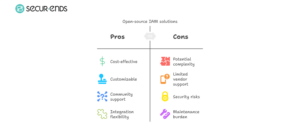
10. Choosing the Right IAM Tool for Your Business Needs
Selecting the best IAM vendors is critical for ensuring robust security, seamless user access, and regulatory compliance. Businesses must evaluate IAM solutions based on functionality, integration capabilities, and scalability.
Key Factors to Consider
When assessing an identity and access management tools comparison, businesses should focus on several key factors.
Scalability is crucial to ensure that the IAM solution can grow with the organization.
Security features such as Multi-Factor Authentication (MFA), encryption, and advanced threat detection help prevent unauthorized access.
Compliance is another vital factor—organizations should choose IAM tools that meet regulatory requirements like GDPR, HIPAA, and SOC 2.
Integrations with existing HR, CRM, and ITSM systems streamline identity management and improve efficiency.
Comparison Matrix of Top IAM Tools
Several leading IAM vendors offer robust solutions with different strengths. Okta is well-known for its user-friendly cloud-based IAM with strong MFA and Single Sign-On (SSO) capabilities. Microsoft Entra ID (formerly Azure AD) is ideal for businesses already using Microsoft services, offering seamless integration with Office 365 and strong compliance support. Ping Identity provides flexible identity federation and API security, making it a strong choice for hybrid environments. IBM Security Verify offers advanced AI-driven identity governance, making it suitable for large enterprises with strict compliance needs.
Checklist: Which IAM Tool Fits Your Organization?
To determine the best IAM solutions for your business, consider whether you need a cloud-based, on-premise, or hybrid IAM solution. Assess the security requirements of your organization—does it require strong MFA, role-based access control, or AI-driven threat detection? Businesses should also analyze their compliance needs and ensure the selected IAM tool aligns with industry regulations. Finally, evaluating the ease of integration with existing IT systems will help streamline implementation and improve user adoption.
11. IAM Automation & AI: The Future of Identity Security
The rise of IAM automation and AI-driven IAM is transforming identity security by enhancing authentication, access control, and threat detection. As cyber threats evolve, organizations are leveraging identity analytics tools to improve security and efficiency.
How AI Enhances Identity Verification & Access Control
AI-driven IAM systems analyze user behavior patterns to detect anomalies, reducing the risk of unauthorized access. Machine learning algorithms enhance IAM automation by enabling adaptive authentication, automatically adjusting access levels based on risk assessments. AI-powered identity verification also improves fraud detection and strengthens compliance.
Role of Machine Learning in IAM Threat Detection
Machine learning plays a crucial role in AI-driven IAM, continuously monitoring login patterns, device usage, and geolocation data to detect suspicious activity. By using predictive modeling, identity analytics tools can identify high-risk behaviors and trigger real-time security responses, such as additional authentication challenges or automatic access revocation.
Future-Proofing IAM with Predictive Analytics & Automation
To stay ahead of evolving cyber threats, organizations must integrate IAM automation with predictive analytics. AI-driven identity governance helps streamline user provisioning, enforce Zero Trust policies, and enhance incident response. As IAM technology advances, businesses that adopt AI-driven IAM will be better positioned to protect digital identities and minimize security risks.
12. How IAM Tools Help Achieve Regulatory Compliance
Businesses must ensure they meet regulatory standards, and IAM security solutions play a vital role in simplifying compliance. By implementing identity governance tools, organizations can automate security processes, track access controls, and generate audit-ready reports to meet compliance requirements.
IAM for GDPR, HIPAA, SOC 2, and ISO 27001
Different industries must comply with specific regulations, and IAM security solutions help organizations achieve this. IAM tools support GDPR by enforcing strict data access policies, ensuring only authorized personnel can handle sensitive customer information. In HIPAA-regulated industries, IAM ensures secure authentication and access logging for healthcare records. For SOC 2, IAM helps maintain strict access governance, while ISO 27001 compliance is achieved through role-based access control and detailed audit logs.
Automated Access Reviews & Compliance Audits
Identity governance tools streamline compliance by automating access reviews, ensuring that employees have only the necessary permissions. Automated reporting features help businesses maintain audit trails, making it easier to prove compliance during security assessments.
How IAM Tools Help Meet Zero Trust Security Principles
As organizations move toward Zero Trust models, IAM security solutions ensure strict verification before granting access. Role-based access control (RBAC), continuous authentication, and just-in-time access provisioning help businesses align their security posture with modern compliance requirements.
13. IAM Tools & Their Role in Zero Trust Security
With cyber threats becoming more sophisticated, organizations are adopting Zero Trust IAM strategies to enforce strict access policies. Identity access management services play a key role in ensuring that users and devices are continuously verified before accessing critical systems.
What Is Zero Trust & Why It Matters?
Zero Trust IAM operates on the principle of “never trust, always verify.” Unlike traditional perimeter-based security models, Zero Trust ensures that every access request is authenticated, authorized, and continuously monitored, regardless of the user’s location.
By leveraging identity access management services, organizations can implement adaptive authentication, Multi-Factor Authentication (MFA), and conditional access policies. IAM tools ensure that users and devices are granted the minimum necessary permissions, reducing the risk of insider threats and external attacks.
Best IAM Tools for Implementing Zero Trust Security Model
Several IAM solutions support IAM for Zero Trust, including Okta, Microsoft Entra ID, and Ping Identity. These tools offer advanced authentication methods, real-time access monitoring, and AI-driven anomaly detection, making them ideal for businesses transitioning to a Zero Trust architecture.
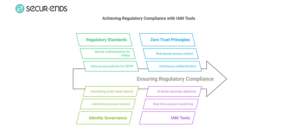
14. Common Challenges When Implementing IAM Tools & How to Overcome Them
Despite their benefits, IAM tools present implementation challenges. Addressing IAM best practices helps businesses avoid common pitfalls and ensure smooth adoption.
User Resistance & Training Issues
A major hurdle in IAM adoption is employee resistance. Organizations must provide training programs to educate users on the importance of security and how IAM best practices enhance their work environment. Implementing user-friendly authentication processes also improves adoption rates.
Integration with Legacy Systems
Many businesses struggle to integrate IAM with outdated infrastructure. Choosing IAM solutions that support API-based integrations and hybrid environments can help avoid IAM implementation failures.
IAM Performance & Scalability Concerns
As businesses grow, IAM systems must handle increasing user loads. Organizations should select scalable IAM solutions with cloud-native capabilities to ensure high availability and performance.
15. Conclusion: The Future of IAM Tools & Next Steps
As digital security threats continue to evolve, businesses must adopt the best IAM tools to protect identities and secure access. The demand for top IAM solutions is increasing as remote work, cloud adoption, and compliance regulations become more complex. Organizations must prioritize strong identity security to protect against cyber threats. The future of IAM includes advancements in IAM technology trends such as AI-driven authentication, decentralized identity management, and passwordless security models. Businesses will continue integrating IAM with Zero Trust frameworks to enhance security.
To implement the best IAM tools, businesses should conduct a needs assessment, select an IAM vendor that aligns with their requirements, and develop a phased deployment plan. By adopting IAM best practices, organizations can ensure long-term security and compliance success.